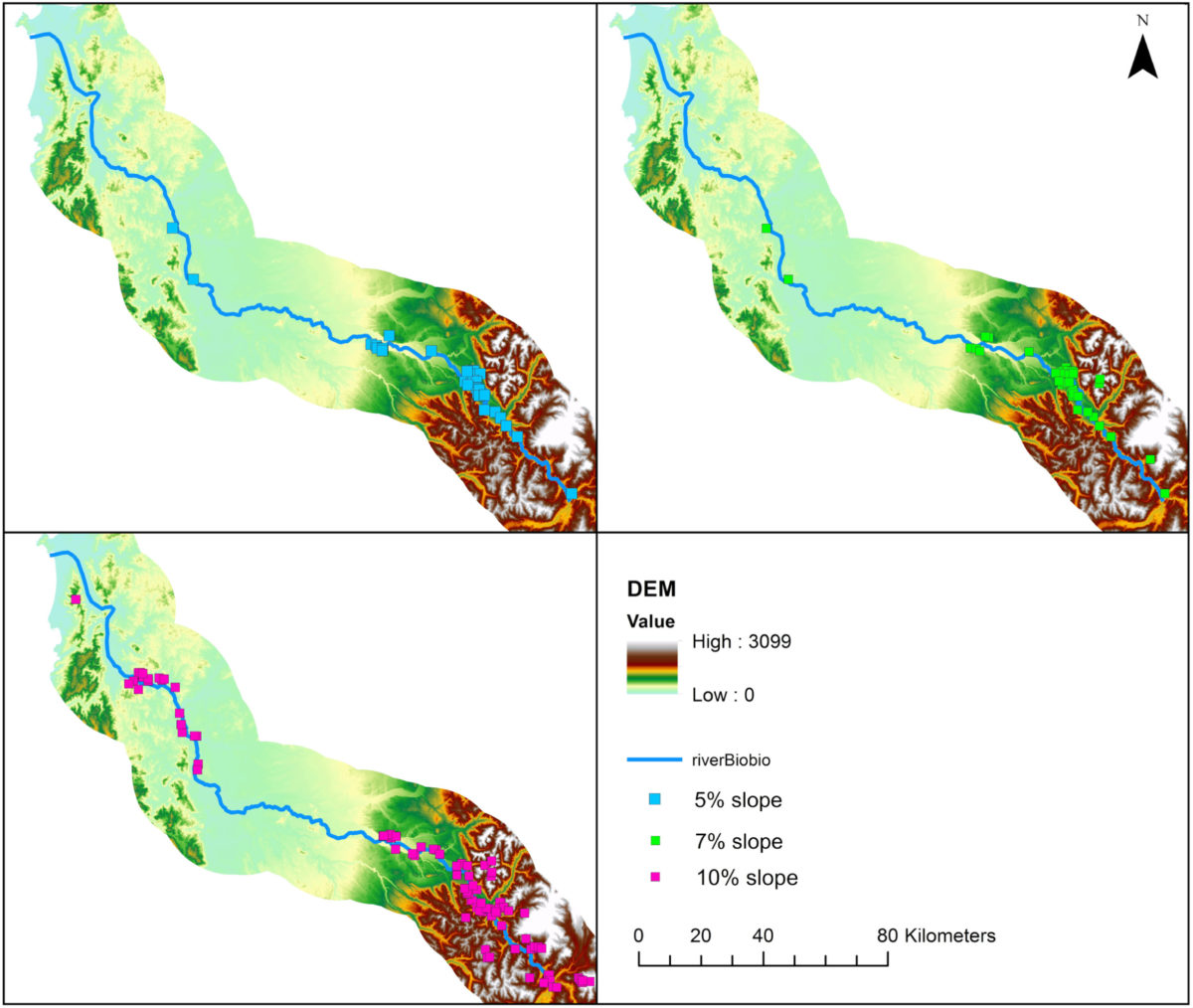Researchers from the University of Stuttgart in Germany have developed a site identification methodology for the construction of pumped hydro storage stations along rivers, shorelines, and existing lower reservoirs.
“The discussed method currently identifies primarily ring dam type reservoirs in flat areas since one of the constraints is the area slope,” they explained. “Nevertheless, this might omit some possible sites where the construction of a dammed valley type structure is feasible, as these types of reservoirs will most likely not pass the slope and area size constraint.”
The novel methodology is based on an algorithm that considers primarily the area shapes and sizes of potential pumped hydro storage sites along rivers and shorelines, while also taking into account common parameters such as geological, topographical, and hydrological conditions, the availability of water bodies, transport infrastructure, power grid proximity, protected areas, nature reserves and heritage sites.
In addition, it considers parameters such as the minimum required flat area for the reservoir, the allowable slope of the terrain, the minimum head, and minimum required head to distance ratio between two reservoirs. “However, the algorithm is not restricted to line based lower reservoirs as rivers or shorelines,” the German group stated, noting that, compared to previous methods, the new methodology includes the shape criterion, which reportedly enables a better analysis of site with irregular shapes that could be unsuitable for ring dams, and applies multiple ground slope ranges.
The scientists applied the proposed method to the Maipo and Bio-Bio rivers in Chile to build a case study and said the two rivers both have sufficient discharge at roughly two thirds of their length to fulfill the minimum flow requirements for an upper reservoir. They identified some potential sites for pumped hydro storage stations close to the river on ridges while a few other sites are located at higher altitudes. “The proposed method was able to find flat suitable surfaces even at higher altitudes. Furthermore, all identified sites seem feasible from a topological point of view. Therefore, the overall efficiency of the proposed method is quite good given the low computational effort,” they further explained.
The German group presented its methodology in the study “Assessment of pumped hydropower energy storage potential along rivers and shorelines,” published in Renewable and Sustainable Energy Reviews. “The proposed method generates high quality results with a low computational effort,” it concluded.
A group of researchers from Australia recently identified 616,818 locations throughout the world that could be suitable sites for 23.1 million GWh of closed-loop pumped-hydro storage capacity. The academics stated that “off-river” pumped-hydro projects are able to overcome the typical topographical issues of conventional pumped-hydro, as the size of reservoirs is relatively small, ranging from tens to hundreds of hectares. This limited size also reduces the need to manage large flood events and ensures considerably lower construction costs.
This content is protected by copyright and may not be reused. If you want to cooperate with us and would like to reuse some of our content, please contact: editors@pv-magazine.com.




By submitting this form you agree to pv magazine using your data for the purposes of publishing your comment.
Your personal data will only be disclosed or otherwise transmitted to third parties for the purposes of spam filtering or if this is necessary for technical maintenance of the website. Any other transfer to third parties will not take place unless this is justified on the basis of applicable data protection regulations or if pv magazine is legally obliged to do so.
You may revoke this consent at any time with effect for the future, in which case your personal data will be deleted immediately. Otherwise, your data will be deleted if pv magazine has processed your request or the purpose of data storage is fulfilled.
Further information on data privacy can be found in our Data Protection Policy.